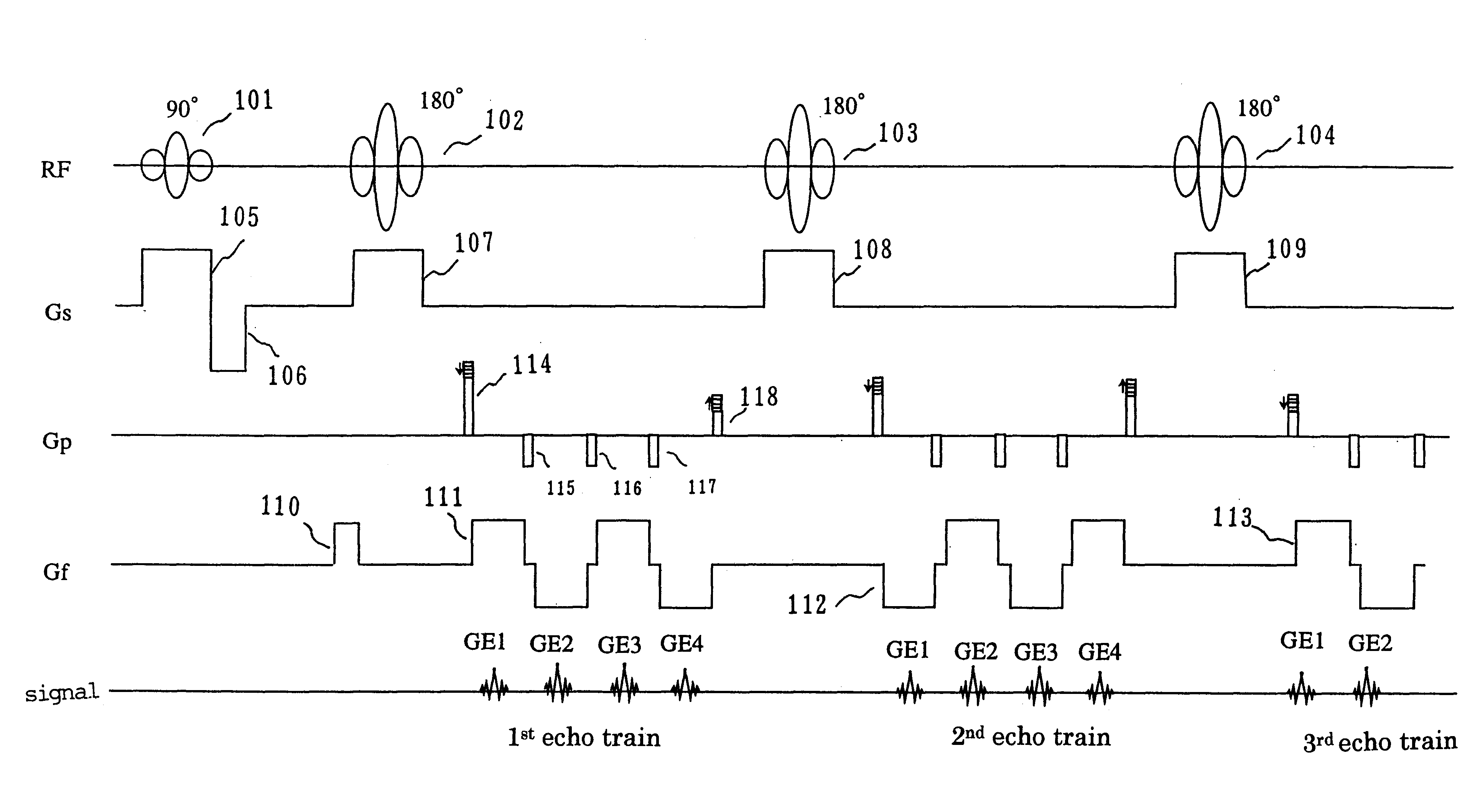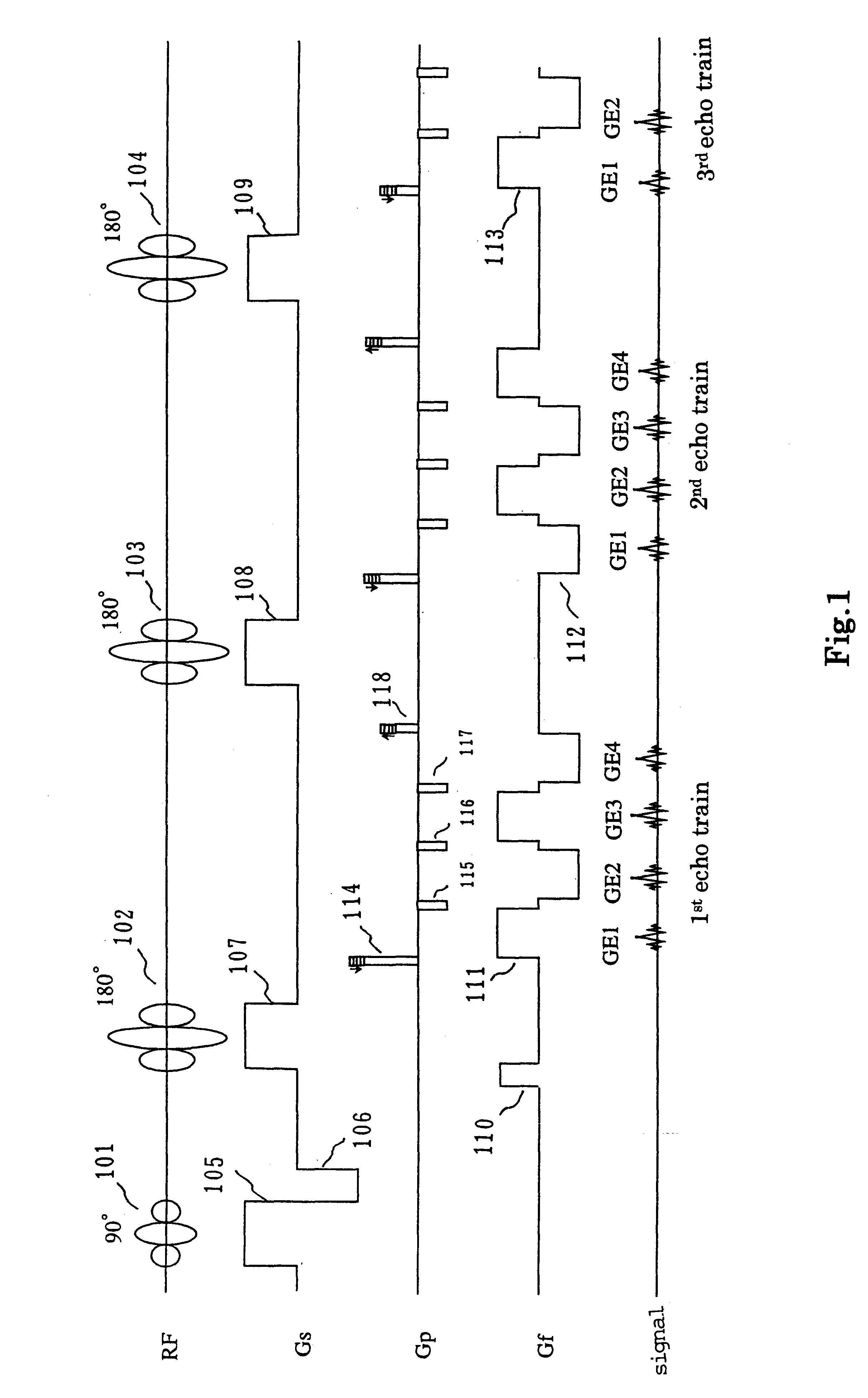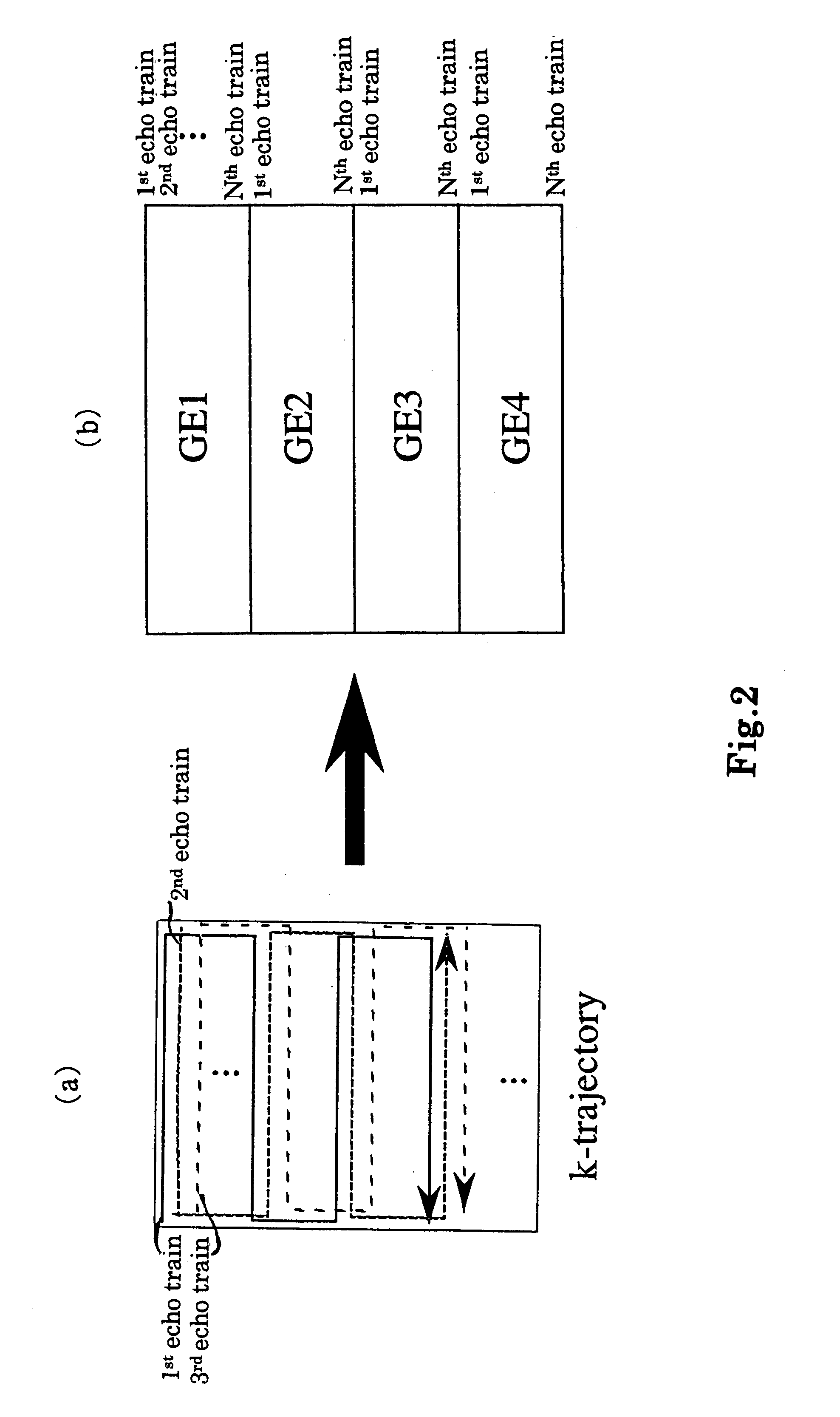Magnetic resonance imaging apparatus and imaging method
a magnetic resonance imaging and imaging method technology, applied in the field of magnetic resonance imaging apparatus, can solve the problems of low sensitivity to difference in magnetic susceptibility and inhomogeneity of local magnetic fields, and is, therefore, difficult to utilize in the bold method
- Summary
- Abstract
- Description
- Claims
- Application Information
AI Technical Summary
Problems solved by technology
Method used
Image
Examples
second embodiment
the present invention will be explained with reference to the timing chart shown in FIG. 5. This sequence is also based on the conventional hybrid sequence. Here, the timing of generation of the spin echo signal is different from the conventional sequence.
In this sequence, a 90.degree. pulse 101 is applied at first and then a plurality of 180.degree. pulses 102, 103 . . . are applied at constant intervals. As is in the embodiment of FIG. 1, the slice selective gradients Gs are applied together with the RF pulses. In this sequence, however, the interpulse time between two 180.degree. pulses is different from that in the sequence shown in FIG. 1. If the interval between the 90.degree. pulse and the first 180.degree. pulse is ETI.sub.1 / 2, the interpulse time between two 180.degree. pulses is longer than ETI.sub.1, i.e., ETI.sub.1 / 2+ETI.sub.2 / 2 (here, ETI.sub.2 >ETI.sub.1). In this condition, a spin echo signal SE is generated upon passage of time ETI.sub.1 / 2 after application of th...
PUM
 Login to View More
Login to View More Abstract
Description
Claims
Application Information
 Login to View More
Login to View More - R&D
- Intellectual Property
- Life Sciences
- Materials
- Tech Scout
- Unparalleled Data Quality
- Higher Quality Content
- 60% Fewer Hallucinations
Browse by: Latest US Patents, China's latest patents, Technical Efficacy Thesaurus, Application Domain, Technology Topic, Popular Technical Reports.
© 2025 PatSnap. All rights reserved.Legal|Privacy policy|Modern Slavery Act Transparency Statement|Sitemap|About US| Contact US: help@patsnap.com



